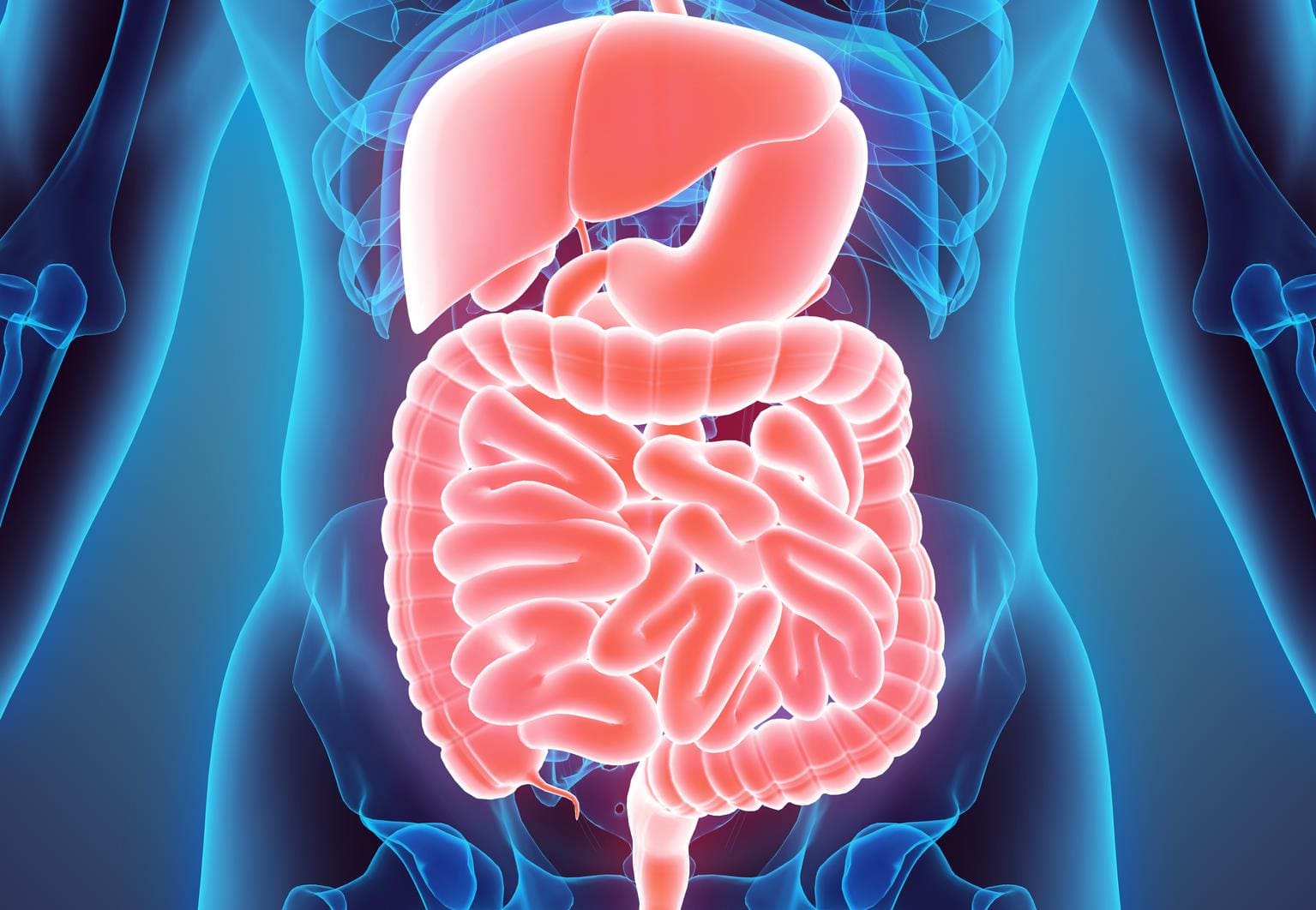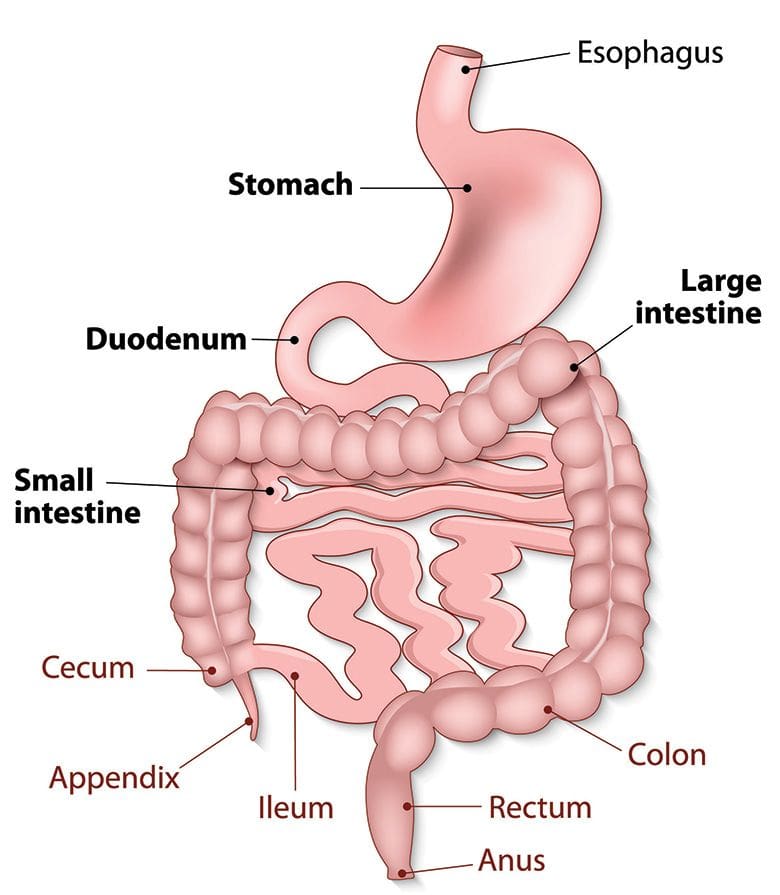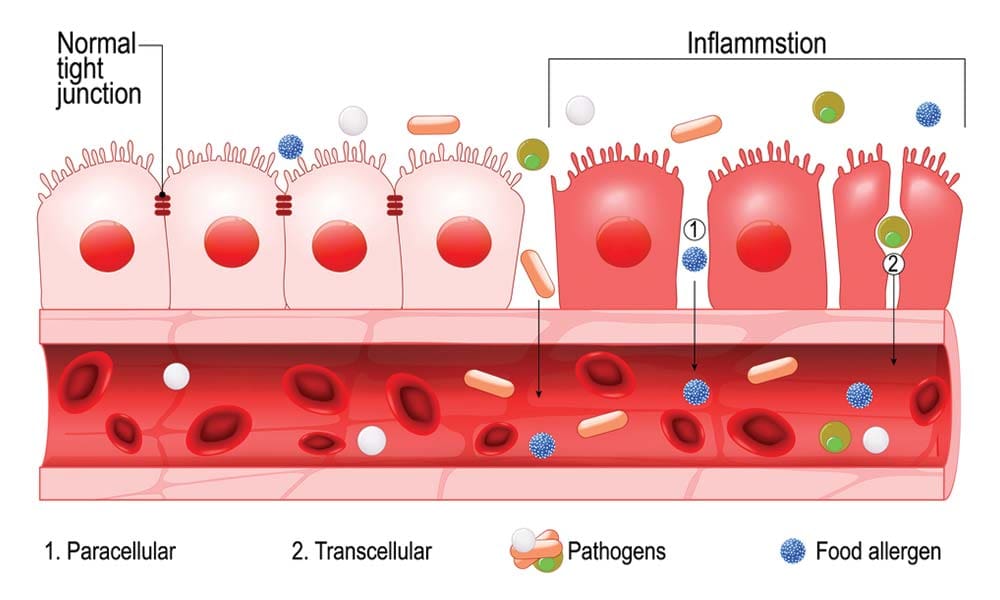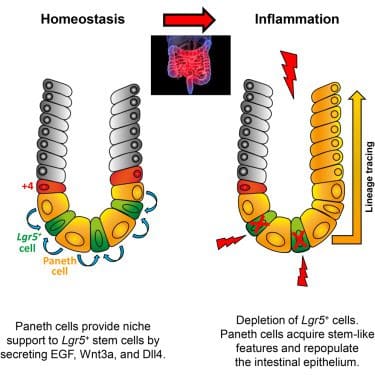Table of Contents
Introduction
The gut is home to many bacterias that help out the body by digesting the food that a person eats, and excretes the waste out of the body. The gut system also makes sure that each of the organs is doing its job and sending the information to the brain that everything is working properly. When there are unwanted pathogens that enter the body and start to mess with the gut and the GI tract, it can cause chronic inflammation and unwanted gastrointestinal problems that can disrupt the permeability of the gut. In this 2 part series, we will be taking a look at what is the GI tract and its role in the gut. In Part 2, we will discuss what are ways to keep a healthy gut intact. By referring patients to qualified and skilled providers who specialized in gastroenterology services. To that end, and when appropriate, we advise our patients to refer to our associated medical providers based on their examination. We find that education is the key to asking valuable questions to our providers. Dr. Alex Jimenez DC provides this information as an educational service only. Disclaimer
Can my insurance cover it? Yes, in case you are uncertain here is the link to all the insurance providers we cover. If you have any questions, please call Dr. Jimenez at 915-850-0900.
What Is The GI Tract Function?
In the gut system, the gastrointestinal (GI) tract is part of that system along with the pancreas, the liver, the stomach, the small and large intestines, the mouth, the rectum, and the anus. Research studies have shown that the primary function of the GI tract is to digest and absorb the ingested nutrients and to exert waste products out. When a person eats nutritional food that is insoluble and can’t be digested, the GI tract can turn these insoluble nutrients into soluble nutrients that can permit the body to absorb them in the mucosal epithelium of the gut. Other studies have also shown that when the digestive system breaks down proteins, fats, and carbohydrates, the body can absorb these nutrients and even used them for energy, growth, and cell repair for the body.
Digestion and Absorption
The digestion and absorption from the GI tract help break down complex foods into basic constituents by dividing the macronutrients into basic units and releasing the micronutrients from the food matrix. The GI tract lets the body selectively absorb the nutrients while also transforming them and the phytonutrients while maintaining a barrier against the entry of unwanted particles that enter the body. When there are nutrients that are not absorbed uniformly, there are specific locations where the available transporters or necessary processes are found in the body. Research shows that digestion is highly important for the body because it needs the nutrients from the food and liquids that a person eats and drinks in order to stay healthy. Not only that but the appropriate timing and sequence is also
important as the bowel transit time can adversely affect the GI tract.
When the transporters and enzyme capacity in the body becomes overwhelmed, it can reduce the effective benefits of dietary nutrients for the body to function properly and causes the GI tract to developed unwanted gut disorders. Another factor to take into consideration is that the nutrients can also be produced by colonic bacteria and may have a limited bioavailability that may be beneficial to colonocytes and microbes in the gut system.
Enteroendocrine Cells
The enteroendocrine cells, as studies have found, are the first level of integrating information from the gut lumen and releasing signaling molecules that activate the nerve fibers in the body. The enteroendocrine cells are part of the gut system and the endocrine system that helps release hormones into the bloodstream and travel all throughout the body. Research studies have found that as part of “the largest endocrine organ” or the gut, the enteroendocrine cells play an important role in the lower GI tract as it acts as sensors to the luminal contents by exerting waste out the GI tract like gastric emptying.
HCTP Therapy
Stem cells* or HCTP (human cellular tissue products) are part of regenerative therapy treatments that both international and nationally affiliated clinics and distribution organizations use to help individuals dampen the effects of chronic disorders and help boost the body’s own natural healing process. HCTP has beneficial properties that help repair and regenerate damaged cells, tissues, and organs back to their original functional state in the body. As more upcoming research discusses the beneficial properties of HCTP, many individuals can begin their wellness journey pain-free and without chronic pain.
Is It Interface Or Barrier In The Gut?
The permeability and barrier function of the gut is represented as one of the most important interfaces between a person and the external environment. However, by not imagining that the barrier function as a system to keep things out from causing gut problems, but as a sophisticated system that communicates with and allows selectively entry of, certain contents from the gut lumen into the body. The gut barrier requires a tightly controlled but thin barrier of tissues and secretions intentionally designed for close proximity to the gut lumen. This will permit the absorption of available nutrients and physiological interaction with trillions of non-human microbes and their metabolites and signals, but also creates a vulnerability to those same microbes, toxins, and immunologically reactive components from the gut lumen.
Tight Junction
Research studies have found that the tight junction in the gut forms a continuous intercellular barrier that is between the epithelial cells. Since many proteins are actually localized in the tight junction, they become critical barrier proteins that make sure that no toxins or unwanted pathogens leaked out. When inflammation starts to attach itself to the tight junction barrier, the immune system will attack the tight junction and release the toxins and molecules out of the gut permeability causing a leaky gut.
Paneth Cells
Paneth cells are found only in the small intestines and help migrate into the crypt after the differentiation of HCTP and are long-lived compared to absorptive cells. Research has found that paneth cells play an integral role in maintaining intestinal homeostasis and modulating the physiology of the small intestine. The paneth cells actually secrete antimicrobial peptides (AMPs) and immunomodulating proteins into the gut lumen while also providing the function of regulating HCTP activity to help repair the intestinal epithelial cells from injury and intestinal inflammation.
Conclusion
All in all, the gut system is home to the gastrointestinal tract which makes sure that any food or liquids that are consumed are being digested for the nutrients for the body and excrete the waste out. When there are disruptors or pathogens that enter the gut and cause inflammation to the intestinal permeability can cause many gut issues that can cause a person pain. The only way to dampen the effects of inflammation is through neutraceuticals that can lower the inflammatory cytokines and consuming food that contains pre and probiotics to help with producing the good bacteria in the gut. When individuals find ways to lower gut inflammation, then they can continue to be pain-free from inflammation.
References
Anderson, James M, and Christina M Van Itallie. “Physiology and Function of the Tight Junction.” Cold Spring Harbor Perspectives in Biology, Cold Spring Harbor Laboratory Press, Aug. 2009, www.ncbi.nlm.nih.gov/pmc/articles/PMC2742087/.
Gunawardene, Ashok R, et al. “Classification and Functions of Enteroendocrine Cells of the Lower Gastrointestinal Tract.” International Journal of Experimental Pathology, Blackwell Publishing Ltd, Aug. 2011, www.ncbi.nlm.nih.gov/pmc/articles/PMC3144510/.
Hornbuckle, William E., et al. “Gastrointestinal Function.” Clinical Biochemistry of Domestic Animals, U.S. National Library of Medicine, 22 Oct. 2008, www.ncbi.nlm.nih.gov/pmc/articles/PMC7173558.
Lueschow, Shiloh R, and Steven J McElroy. “The Paneth Cell: The Curator and Defender of the Immature Small Intestine.” Frontiers in Immunology, Frontiers Media S.A., 3 Apr. 2020, www.ncbi.nlm.nih.gov/pmc/articles/PMC7145889/.
Medical Professionals, Cleveland Clinic. “Digestive System: Function, Organs & Anatomy.” Cleveland Clinic, 9 Aug. 2021, my.clevelandclinic.org/health/body/7041-digestive-system.
Medical Professionals, NIDDK. “Your Digestive System & How It Works.” National Institute of Diabetes and Digestive and Kidney Diseases, U.S. Department of Health and Human Services, Dec. 2017, www.niddk.nih.gov/health-information/digestive-diseases/digestive-system-how-it-works.
Sternini, Catia, et al. “Enteroendocrine Cells: A Site of ‘Taste’ in Gastrointestinal Chemosensing.” Current Opinion in Endocrinology, Diabetes, and Obesity, U.S. National Library of Medicine, Feb. 2008, www.ncbi.nlm.nih.gov/pmc/articles/PMC2943060/.
Disclaimer
Post Disclaimer
Professional Scope of Practice *
The information herein on "An Insightful Overview Of The GI | Part 1" is not intended to replace a one-on-one relationship with a qualified health care professional or licensed physician and is not medical advice. We encourage you to make healthcare decisions based on your research and partnership with a qualified healthcare professional.
Blog Information & Scope Discussions
Our information scope is limited to Chiropractic, musculoskeletal, physical medicines, wellness, contributing etiological viscerosomatic disturbances within clinical presentations, associated somatovisceral reflex clinical dynamics, subluxation complexes, sensitive health issues, and/or functional medicine articles, topics, and discussions.
We provide and present clinical collaboration with specialists from various disciplines. Each specialist is governed by their professional scope of practice and their jurisdiction of licensure. We use functional health & wellness protocols to treat and support care for the injuries or disorders of the musculoskeletal system.
Our videos, posts, topics, subjects, and insights cover clinical matters, issues, and topics that relate to and directly or indirectly support our clinical scope of practice.*
Our office has reasonably attempted to provide supportive citations and has identified the relevant research study or studies supporting our posts. We provide copies of supporting research studies available to regulatory boards and the public upon request.
We understand that we cover matters that require an additional explanation of how it may assist in a particular care plan or treatment protocol; therefore, to further discuss the subject matter above, please feel free to ask Dr. Alex Jimenez, DC, or contact us at 915-850-0900.
We are here to help you and your family.
Blessings
Dr. Alex Jimenez DC, MSACP, RN*, CCST, IFMCP*, CIFM*, ATN*
email: coach@elpasofunctionalmedicine.com
Licensed as a Doctor of Chiropractic (DC) in Texas & New Mexico*
Texas DC License # TX5807, New Mexico DC License # NM-DC2182
Licensed as a Registered Nurse (RN*) in Florida
Florida License RN License # RN9617241 (Control No. 3558029)
License Compact Status: Multi-State License: Authorized to Practice in 40 States*
Presently Matriculated: ICHS: MSN* FNP (Family Nurse Practitioner Program)
Dr. Alex Jimenez DC, MSACP, RN* CIFM*, IFMCP*, ATN*, CCST
My Digital Business Card





